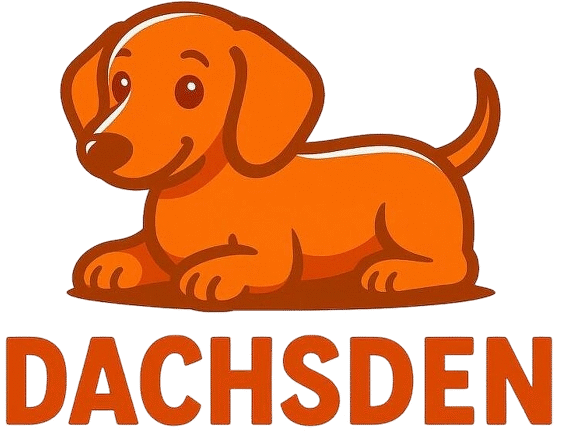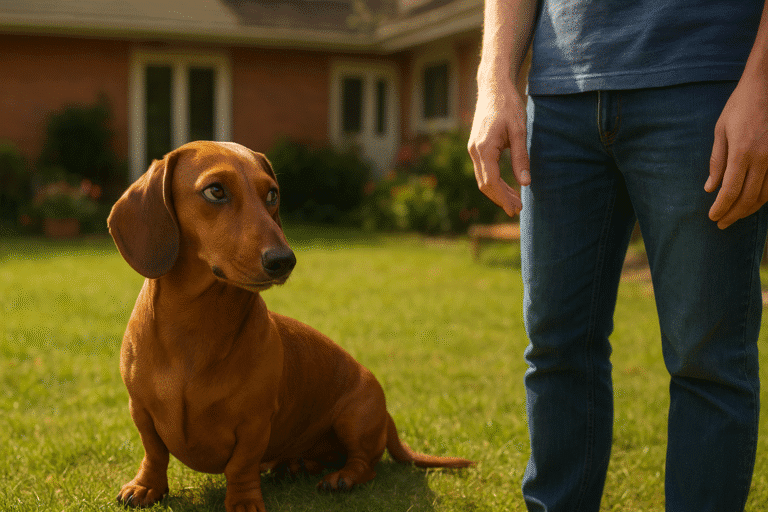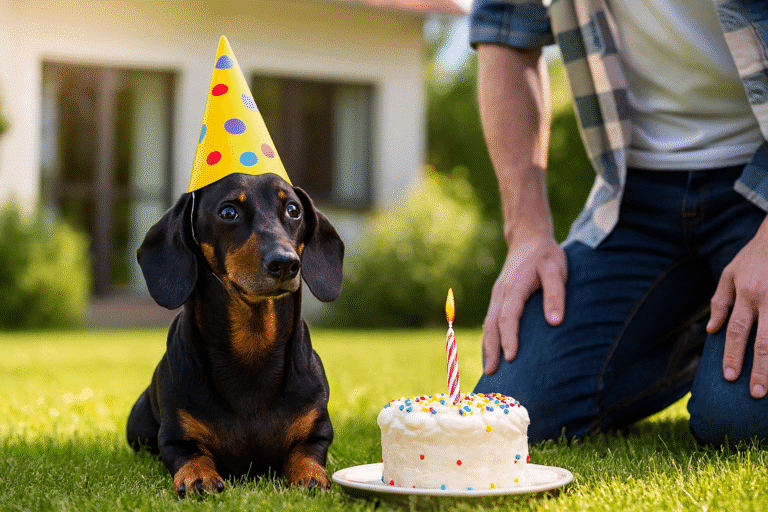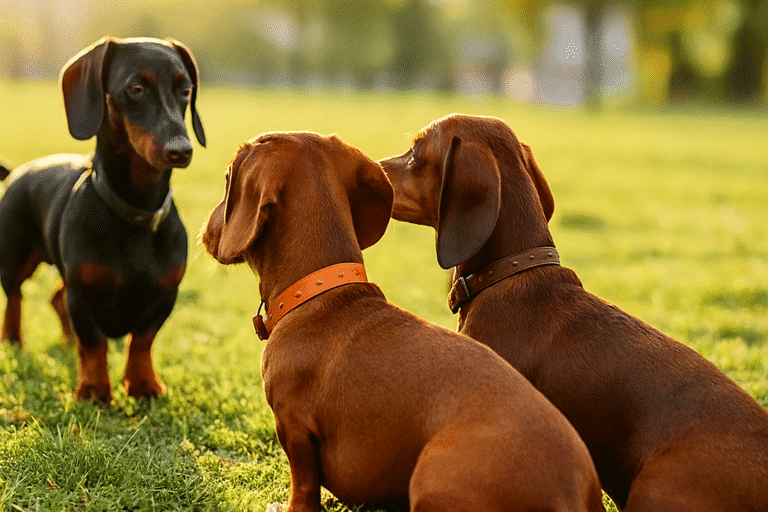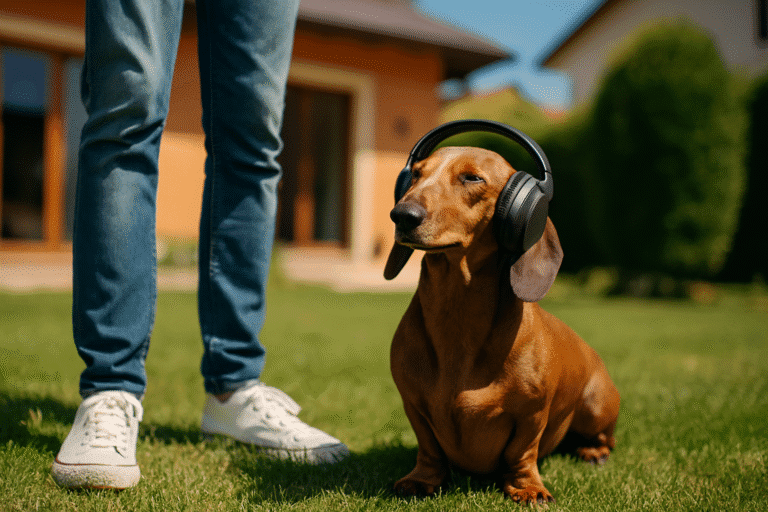Miniature vs Standard Dachshunds: 7 Key Differences
Dachshunds, also known as Doxies, Wiener, or Sausage Dogs, are loyal and lively breeds that were originally bred in Germany to help humans in hunting badgers. Over time, they’ve evolved into two distinct sizes: the Standard Dachshund and the Miniature Dachshund.
Though similar, the miniature is more diminutive and often a better fit for small spaces. As you read on, you’ll learn why each breed offers its own wonderful qualities, with only a few exceptions between the two.
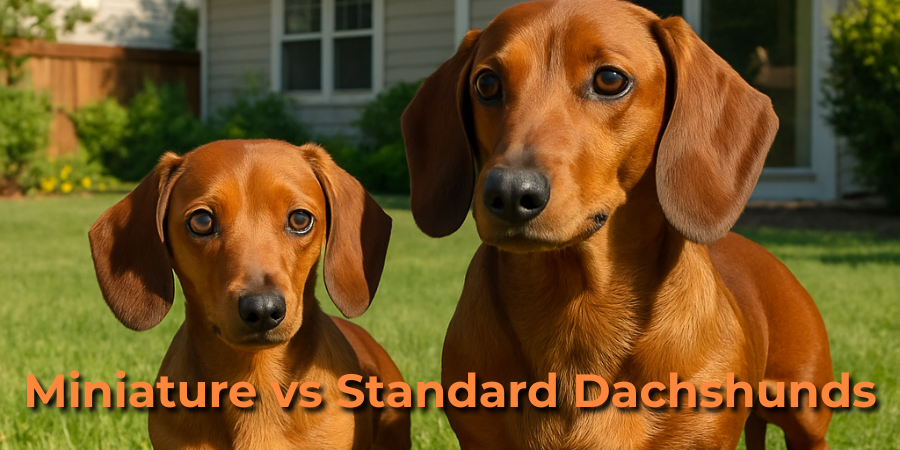
Miniature vs Standard Dachshunds: Key Differences – Short Answer
Miniature vs Standard Dachshunds mainly differ in size, with Miniature Dachshunds being more diminutive and suited for small spaces, while Standard Dachshunds are slightly larger and more robust. Both breeds are similar in personality and were originally bred in Germany for hunting badgers, making them energetic and loyal dogs.
1. Size & Physical Characteristics
One of the most obvious differences between Miniature and Standard Dachshunds is their size, which can greatly impact your choice depending on space and lifestyle. These distinctions have roots in the early breeding purposes and origins of this dog type.
Standard Dachshunds are larger, usually weighing between 16 and 32 pounds, and standing 8 to 9 inches tall at the shoulder.
In contrast, Miniature Dachshunds weigh less than 11 pounds and reach just 5 to 6 inches in height. This difference makes them ideal for people with limited room or specific preferences for dog size.
2. Coat Types & Grooming Needs
Both Miniature and Standard Dachshunds come in three coat varieties: smooth, longhaired, and wirehaired. Some variations, such as the creamy-coated versions, may require more attention due to their coat sensitivity and lighter pigment.
Each type brings its own grooming needs and shedding levels. Smooth-coated Dachshunds have short, shiny fur that’s easy to maintain.
Longhaired ones feature soft, flowing coats that need regular brushing to prevent mats and tangles. Wirehaired Dachshunds have a rough, dense coat that also requires regular grooming to keep its texture neat. This includes specific grooming practices like special coat care routines.
3. Temperament & Behavior
Miniature Dachshunds are often more energetic and alert than their larger counterparts, and they usually have a strong prey drive, making them especially enthusiastic about chasing small animals in the yard or on walks.
This high energy can be fun but might need a bit more supervision, especially around other pets. In contrast, Standard Dachshunds, though still quite lively, often display a more laid-back demeanor, enjoying playtime but also being content to relax beside their owner.
4. Exercise & Activity Requirements
Dachshunds are active dogs that need regular exercise to stay healthy. Daily walks and plenty of playtime are essential to keep them physically and mentally stimulated. But because of their long backs, owners should avoid activities that can strain the spine, like jumping from heights or excessive stair climbing, which could lead to injury over time.
Miniature Dachshunds, known for their higher energy levels, often require more active engagement than Standard Dachshunds. They thrive with extra playtime and interactive games, especially when kept indoors or in smaller spaces. Their energy can be a joy to manage with the right routine, helping to balance both behavior and bonding.
5. Trainability & Socialization
Training a Dachshund is a rewarding experience, thanks to their high energy and strong personalities. A well-trained Doxie offers years of laughter and loyal companionship. Start with a consistent daily routine—set times for meals, potty breaks, walks, and playtime—to help them adjust to your family’s lifestyle.
Teaching basic commands like “sit” and “stay” is essential for any Weiner Dog. These spunky, intelligent pups can be trained to do incredible tricks that entertain and boost their confidence. As they progress, try agility obstacles or catching treats mid-air, using positive reinforcement like praise, love, and attention—they truly thrive on it.
6. Health & Lifespan
Owners should schedule regular check-ups with a trusted veterinarian to keep their Doxie healthy and current on all needed vaccinations. But caring for a Dachshund involves more than just vet visits—it’s also about staying aware of subtle changes in behavior or appetite, and performing daily grooming like brushing their coats and trimming nails.
A balanced diet is essential for your Sausage Dog’s well-being. Owners should feed the proper amount and type of food to keep them in top shape. Regular exercise is also key in any pet’s life, giving them opportunities to run, play, and move around freely.
As for lifespan, Miniature Dachshunds typically live 13–16 years, while Standard ones average 12–14 years. Smart preventive tips like timely checkups, weight management, and controlled activity can help extend those precious years.
7. Which Dachshund Is Right for You?
When deciding between a Miniature or Standard Dachshund, think about important factors like your living space, lifestyle, and how much time you can dedicate to training and care.
Miniature Dachshunds are ideal if you want a smaller, more energetic dog, while Standard Dachshunds are great for those who prefer a slightly larger, more relaxed companion. Some people also consider uniquely patterned varieties when choosing between the two.
It’s also important to consider the dog’s role in your household. For families with children or other pets, proper socialization and training are key to a harmonious environment. Also, understanding possible health issues and grooming needs for each variety will help you prepare for responsible pet ownership.
Conclusion
The main differences between Dachshunds and Miniature Dachshunds come down to their size and how much exercise they need. Otherwise, these dogs are very similar—both breeds are smart, intelligent, and full of big, tenacious, sometimes mischievous personalities. There’s so much to love about both types.
Which breed you choose really depends on how much space you have, how much time you can give to walking your pup each day, and whether a toy size fits your lifestyle. A smaller home or less available time might mean you should consider a Miniature Dachshund. But since Dachshunds of all sizes enjoy company, why not get both?
FAQ’s
Are mini or standard Dachshunds better?
Standards are well suited for outdoor activities like hiking in the forest, going anywhere other big dogs can go. Minis have a high-pitch yapping bark, while stds have a deep bark like a bigger dog. A Mini can be bathed in a kitchen sink, while stds need a bathtub, and Mini clearly eats less.
How do I know if my dachshund is miniature or standard?
Doxies are either miniature or standard, based on measuring their height at the withers—the highest point between the shoulders at the base of the neck while standing. Miniatures are typically 5–6 inches tall and should have a healthy weight of less than 12 pounds.
Should I get a miniature dachshund or a dachshund?
If you live in a smaller space or want a more energetic, easy-to-manage dog, a Miniature Dachshund might be a better fit. If you prefer a slightly larger, more laid-back companion for outdoor activities, a Standard Dachshund could suit you more. Both are loyal and loving—your choice depends on your lifestyle, space, and time for exercise.
Do standard Dachshunds have less back problems than minis?
A study in Norway by Stigen (1991) found that standard-sized Dachshunds were more likely to be affected by calcified discs than miniatures. The occurrence was higher in the wirehaired variety, followed by smooth coated. Longhaired varieties were the least affected in comparison. You can also explore lesser-known facts that reveal more about these unique dogs’ traits and vulnerabilities.
